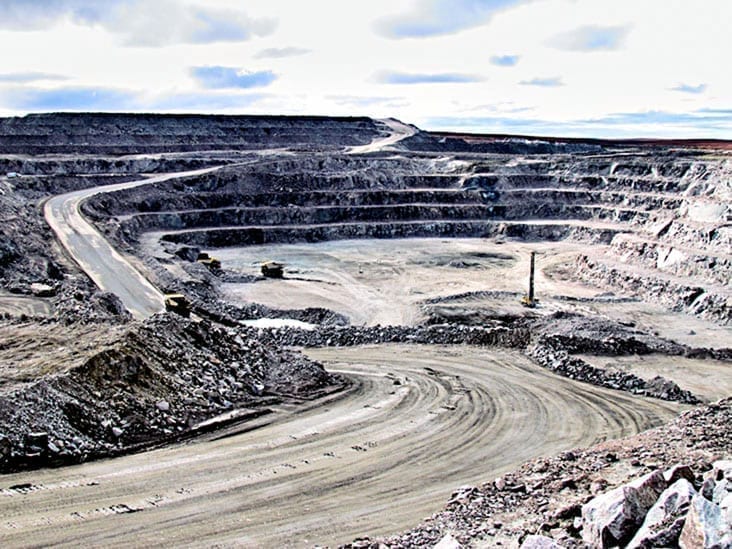While a mining boom is boosting growth in neighbouring territories, the NWT's economy will likely stumble as its mines pass peak production, according to a Conference Board of Canada report.
After a roughly 2 per cent growth rate, weak mining investments will lead to sluggish growth projections in the long-term, the July 10 report stated. Meanwhile, two new mines will ease the decline of the territory's diamond sector over the next decade, but will not fully replace the losses.

NNSL FILE PHOTO
Diavik and Gahcho Kue diamond mines are expected to close within the decade, despite a recent ore discovery at the latter that could extend its life.
The NWT's third operational diamond mine, Ekati, could potentially produce into the 2030s, if it carries out an expansion. Dominion Mines shelved one of these projects – Jay, which would extend the mine's life to 2034 – last year.
Another project, Fox Deep, was still under consideration, but could expand mining operations at the site until 2042, according to a 2017 Dominion assessment.
While construction at existing mines could offset losses, Tom Hoefer, NWT & Nunavut Chamber of Mines executive director, said the grim outlook is largely the result of a lack of investment in mineral exploration over the last 12 years.
“When we explore today, it's really in hopes of having a mine in 20 years time,” Hoefer said. “We've missed out on a huge amount of exploration opportunities.”
As a result, there are few mines to offset the closures of existing ones.
He said all three territories have similar capacity for mineral development.
“That's where I take the next the assumption I make: So if we all have the same mineral potential, then the NWT could have paralleled the other two jurisdictions.”
When it comes to exploration, “It's like playing Bingo,” he said. “You don't play one Bingo card” because “your odds for success are higher.”
“We need to be playing a lot of Bingo cards to get winners,” he explained.
There are currently four smaller mines that could eventually enter production, but they don't equal Diavik, Hoefer said.
“They're world class mines at Diavik and Ekati and when you lose one of those, it's going to take many more mines to replace it,” he said.
In its report, the Conference Board of Canada further stated that sluggish mining growth will affect other sectors, especially around construction and will push workers out of the territory. The latter trend will make it more difficult to cover the costs of the territory's aging population, it said.
Conversely, the health care sector is expected to enjoy employment growth, along with other non-commercial services.
In a news release, NWT & Nunavut Chamber of Mines also pointed to the NWT's low mineral exploration expenditures, which Nunavut and the Yukon consistently outpace.
“(L)acklustre exploration investment continues to be insufficient to sustain our industry. It’s clearly linked to actions within the territory and not to geology or markets,” stated Gary Vivian, president of the NWT & Nunavut Chamber of Mines.
“The very high mineral potential can support generations of mines, but they very much need to improve land access, improve the regulatory environment, and address costs. What’s most disappointing is that this is old news, and despite our efforts to get changes made, the economic forecast for the NWT continues to be poor.”